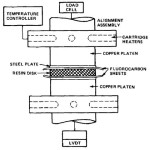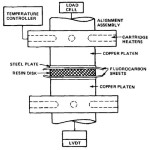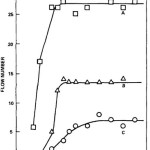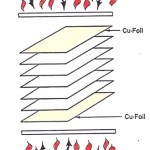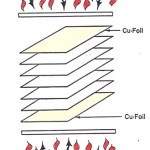In this post we will briefly review the viscosity changes during the non-isothermal heating of B-staged epoxy prepregs and describe a set of carefully controlled prepreg samples used to demonstrate the utility of the squeezing flow test. Recall that during non-isothermal processing, at the B-staged prepreg glass transition temperature (Tg), the resin viscosity decreases ... [Click to Continue...]
Rheology of Thermosets Part 14: Composite Lamination Case Study – 4
In the last post we introduced the concept of the squeezing flow test and how the viscosity is related to the rate of platen closure using the Stefan equation. We also described a custom fixture (shown at left) developed at Syracuse University jointly with IBM to investigate the rheological properties during squeezing flow testing. In the next few posts we will be showing ... [Click to Continue...]
Rheology of Thermosets Part 13: Composite Lamination Case Study – 3
In the last post we presented the basics of the flow test and how to use the aborted flow test to determine the flow number as a function of time for various heating rates (figure on the left). In this post we will describe a method to measure flow continuously as a function of time. The focus here was to understand the large scale flow during lamination of large laminates ... [Click to Continue...]
Rheology of Thermosets Part 12: Composite Lamination Case Study – 2
In this post we will introduce the concepts and methods to measure flow using the IPC flow test. Complete details of the test method may be found in IPC-TM-650 (The Institute for Interconnecting and Packaging Electronic Circuits). The flow test measures the percent resin that flows out of a standardized stack of B-staged prepreg for a given lamination process. The test is ... [Click to Continue...]
Rheology of Thermosets Part 11: Composite Lamination Case Study – 1
Last fall I posted a ten part series on the Rheology of Thermosets (staring August 11, 2014) and covered the basics of rheometry, isothermal and non-isothermal rheology measurements, and finished with a case study on composite lamination. In the next series of posts, I will expand on the composite lamination case study and provide a more in-depth look at how the rheology and ... [Click to Continue...]

